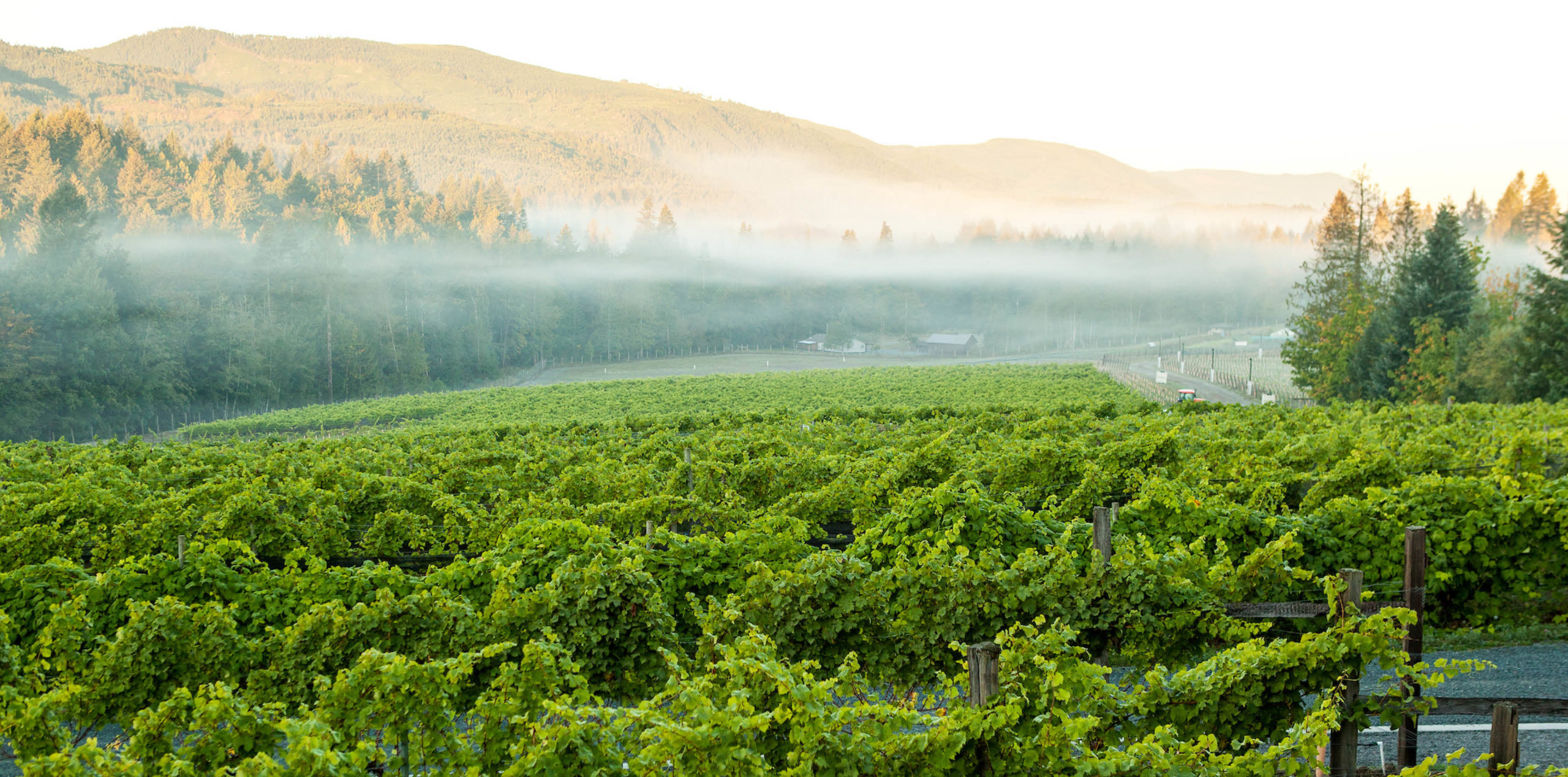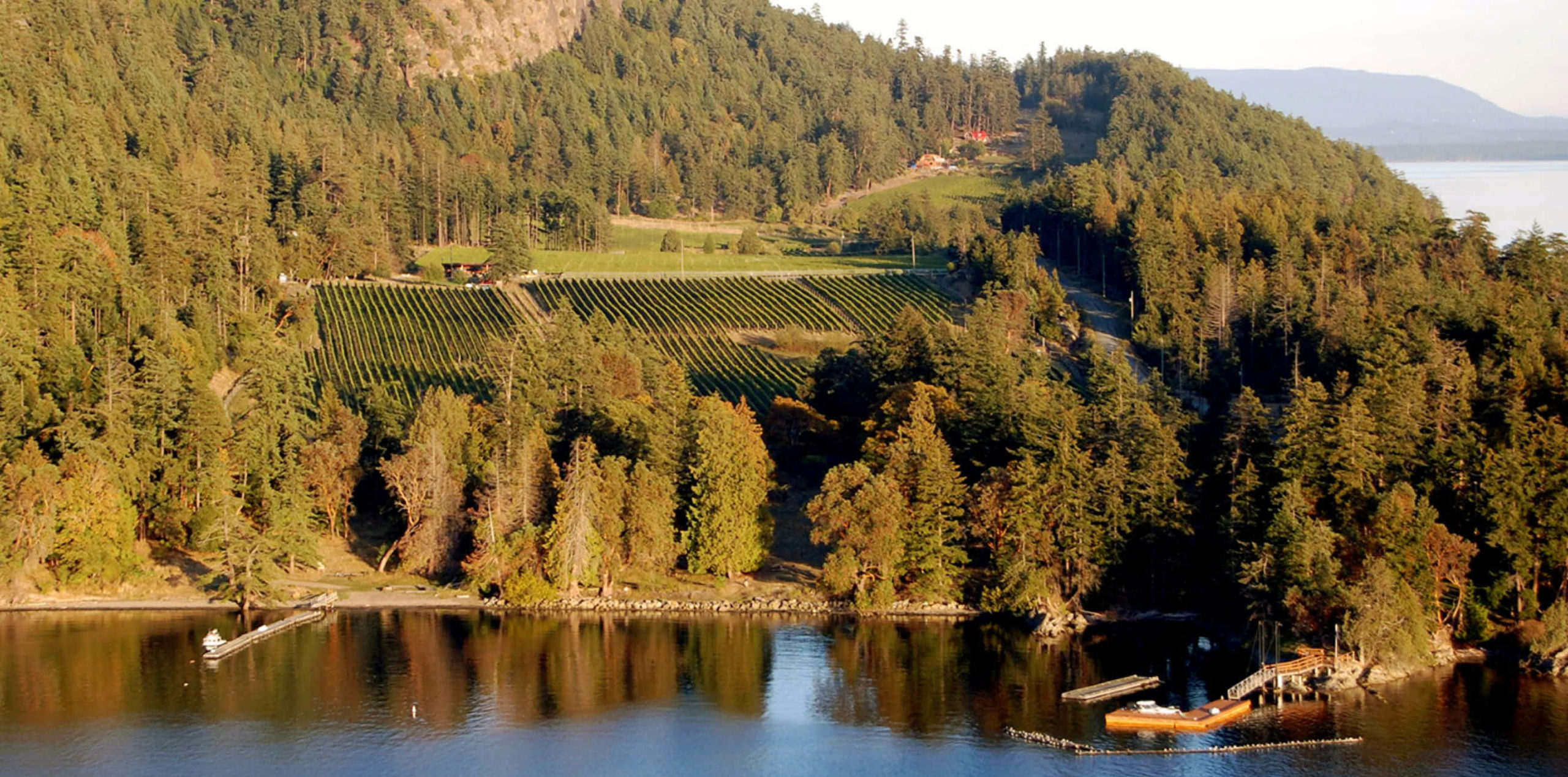by Tania Tomaszewska –
I really started to understand the multiple layers of terroirs (and merroirs) of the expansive Salish Sea when I was the Wine Journey Guide on the 2019 inaugural “Wines & Islands” small vessel expedition run by Victoria’s own Maple Leaf Adventures. Not only did we explore local drops through “land visits,” vineyard walks and chef-prepared meals with winemakers and proprietors, but just as importantly, we traversed ocean pockets which form part of our local islands’ “sense of place.” We got to see the land from a distance.
Tendering alongside the coastline of Pender or Saturna Islands, for example, one can see the lines of rock, sandstone and soils supporting the Mediterranean-style brush and arbutus trees synonymous with the area. Stopping to stroll on a small island cay formed by a diversity of sands, you consider the geological history underlying our Wine Islands region.
It’s thought that Vancouver Island and the Gulf Islands are remnants of volcanic formations and marine deposits which floated up from the Polynesian tropics about 300 million years ago during the “heyday” of the mini-continent Wrangellia. Then came the tectonic “collision” about 100 million years ago when Vancouver Island collided with mainland North America, followed by an “erosion” period 90 million years ago when Vancouver Island soils derived through coastal erosion. And then a “glaciation” era left layers of sedimentary deposits such as the five-kilometre-thick Nanaimo Sediments which is the foundation of an agri-belt running from Saanich to Port Alberni. There’s a completely different geological and soil history here than in the Okanagan Valley.
They say it all happens in the vineyard, but other factors exist here aside from the soils which allow us to grow grapes for wine production. There’s the rain shadow provided by the Coastal Mountains and Mount Prevost near Duncan, the moderating effects of the Salish Sea and Quamichan Lake, and pockets of hot, dry Mediterranean-like conditions. Our growing season is getting longer and rainy periods are shortening. We have a very unique place to make wine. It’s like no other spot.
Rather than trying to emulate or replicate other regional styles of wines which really can’t work here, we’re focusing on being us and using grapes which are viable and suitable to express our Salish Sea location. History and geography matter. An increasing number of our coastal vintners are farming sustainably and embracing stewardship of the land to make terroir-driven maritime wines. Organic and biodynamic practices are often employed and many makers use as little intervention as possible.
This manifests in vibrant and fresh wines with lower alcohol which pair with food we can source locally. Aromatic whites like pinot gris, bacchus, ortega, siegerrebe and sauvignette (epicure) can thrive and pinot noir is the red to look out for. Shifting weather patterns and increased investment in the industry have shown how this delicate Burgundian grape can shine on Vancouver Island and some Gulf Islands. The naturally high acidity of our coastal grapes is a perfect building block for sparkling wine – so expect to see more local bubbles. (Latitudinally we’re not that far off Champagne remember.)
Back to the inaugural Wines & Islands voyage. Not only was it the first for Maple Leaf Adventures, but as far as we know, a first of its kind on the West Coast. An emerging “Island Wine” region on the world wine map, our region is receiving global recognition from experienced players like Barbara Banke and daughter Julia Jackson (of the Jackson Family from California) who’ve recently purchased Unsworth Vineyards. Watch this space for more on that!
Vancouver Island,
Photo courtesy Blue Grouse Estate Winery
Saturna Island,
Photo courtesy Wines of British Columbia





